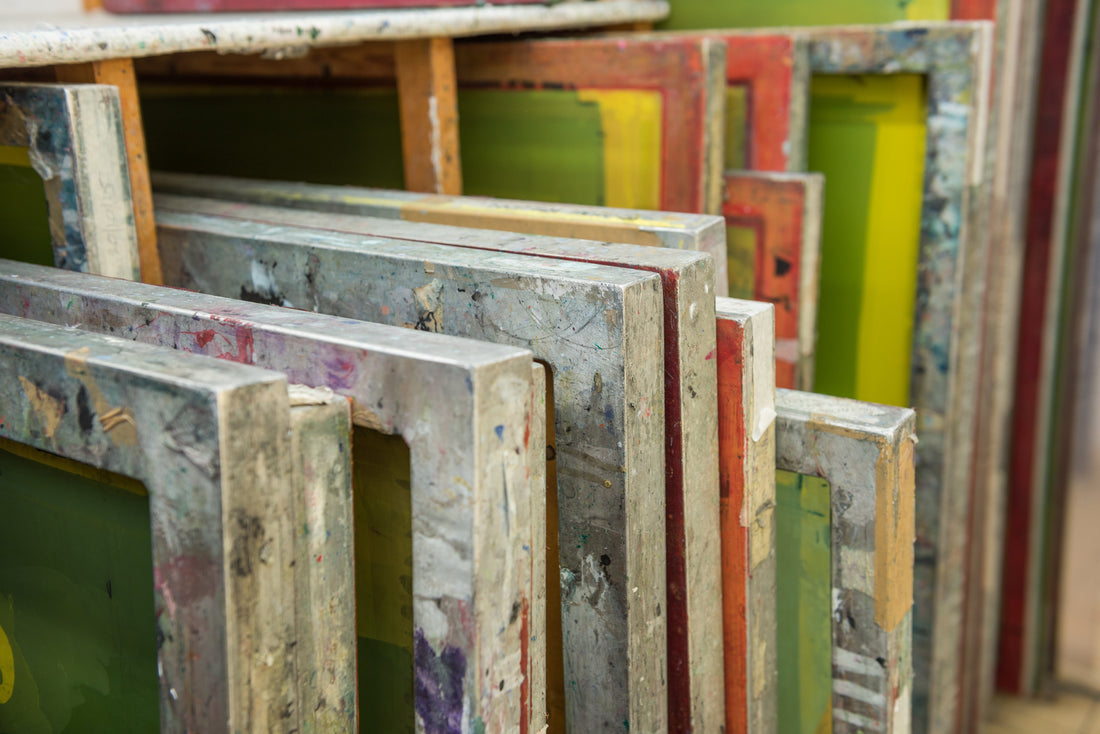
What is Screen Printing?
Share
We have all worn screen printed clothes, but what is it and how is it done?
Screen printing or silk screening is a printing technique where ink is pushed through a mesh stencil, which is stretched over a frame, onto a surface such as wood, paper, fabric or ceramic.
It is a traditional method that dates back to ancient China where actual silk was used, however these days most mesh are synthetic.
Step 1 - Artwork
There are limitations to the types of artwork that can be used for screen printing.
Each color is laid down separately on its own screen, so even the most elaborate setup will limit designs to 3-8 colors.
Secondly, each color prints is laid on flat, so traditional shading and gradients are not an option. All shading needs to be stippling or crosshatching.
Step 2: Transparency Creation
The artwork is printed onto screen printed special transparency paper.

Step 3: Screen Burning
The image is transferred or "burned" through a photo emulsion process. In a darkroom with a red light bulb the screen is coated with a light sensitive emulsion and allowed to dry. The transparency is then laid down on top of the emulsion, blocking light from underneath all ink strokes.
Then the screen is exposed to ana extremely bright high wattage light. All of the exposed emulsion hardens leaving the design soft. It can then be washed away leaving only the design remaining.

Step 4 - Printing
The ink is pushed through the screen in one long stroke using a squeegee.

